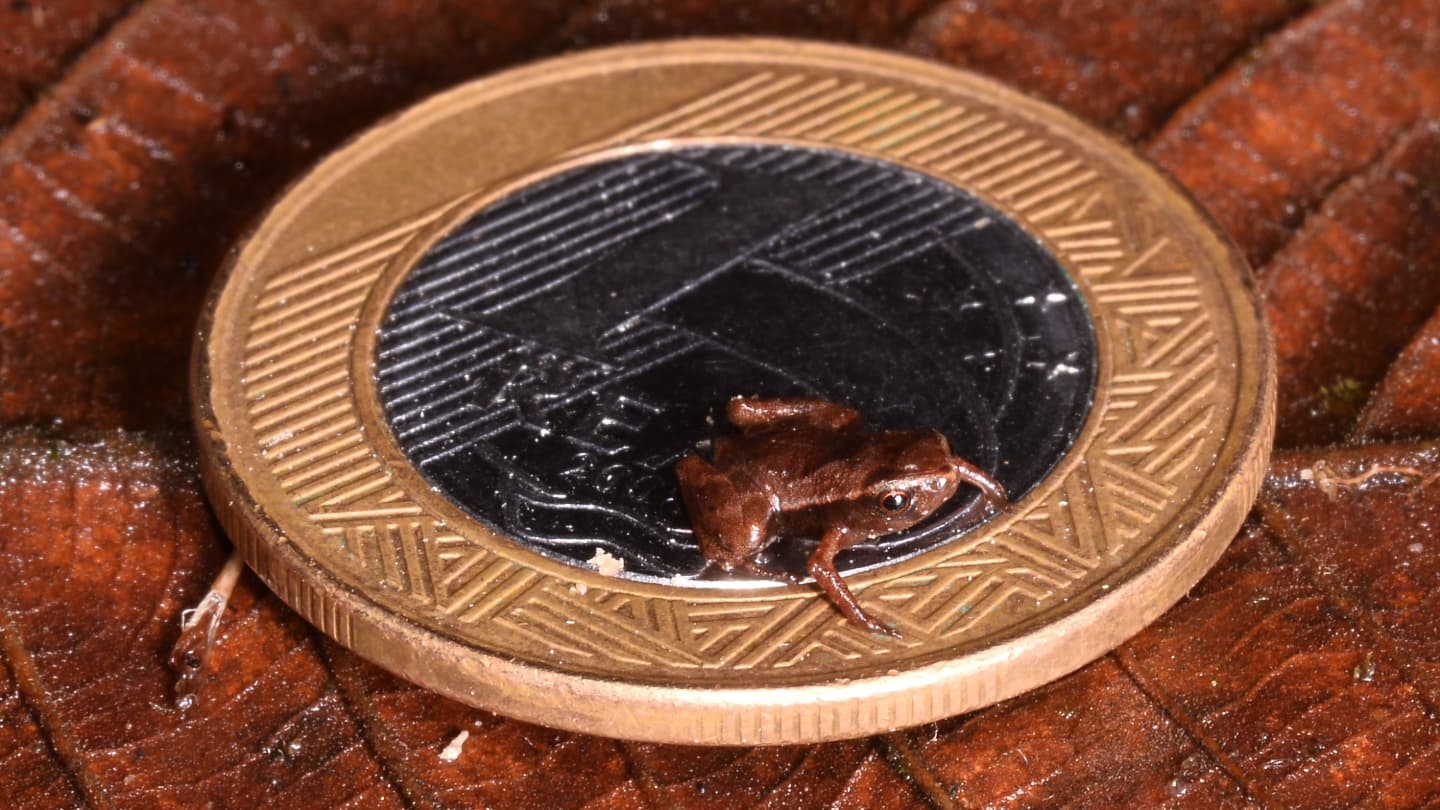These scientific feats set new records in 2024

Noteworthy findings include jumbo black hole jets, an ultrapetite frog and more
Bits of rock in Antarctica suggest an asteroid disintegrated over the icy continent roughly 2.5 million years ago.
” data-medium-file=”https://i0.wp.com/www.sciencenews.org/wp-content/uploads/2024/02/020124_kk_oldest-airburst_feat.png?fit=680%2C383&ssl=1″ data-large-file=”https://i0.wp.com/www.sciencenews.org/wp-content/uploads/2024/02/020124_kk_oldest-airburst_feat.png?fit=800%2C450&ssl=1″ tabindex=”0″ role=”button”>
Bits of rock in Antarctica suggest an asteroid disintegrated over the icy continent roughly 2.5 million years ago.
Mark A. Garlick/markgarlick.com
2024 was studded with record-setting scientific discoveries. From tracing the origins of glow-in-the-dark animals to developing the world’s fastest microscope, these superlative feats captured our imagination.
Ancient Airburst
Some 2.5 million years ago, an asteroid combusted in Earth’s atmosphere before it could hit the ground and leave a crater, making the event the oldest known midair explosion. That conclusion is based on a chemical analysis of nearly 120 microscopic rocks buried deep underneath Antarctic ice. The ancient pebbles are rich in olivine and spinel minerals, which suggests the specimens are the asteroid’s remnants, scientists say.

The dawn of photosynthesis
Microfossils in Australia harbor the oldest evidence of photosynthesis. Fossilized bacteria dating to about 1.75 billion years ago preserve structures that resemble thylakoid membranes, which help modern cyanobacteria convert sunlight into oxygen. Scientists had previously suspected that cyanobacteria were photosynthesizing way back then, but the new finding is the first direct evidence.

Fastest backflip
Dicyrtomina minuta springtails can launch themselves up to 60 millimeters in the air and spin at a rate of up to 368 times per second, making the arthropods the fastest known backflippers (SN: 10/5/24, p. 4). An appendage on the underbelly helps the miniature gymnasts lift off while another helps them stick the landing.

Wee-est frog
At just 6.5 millimeters long, a Brazilian flea toad (Brachycephalus pulex) has been crowned the world’s smallest known frog (SN: 3/23/24, p. 4). Petite enough to sit on a pinkie fingernail, the amphibian beat the previous champion by about a millimeter.

Large genome, small package
The largest known genetic instruction manual belongs to a tiny fern (SN: 6/29/24, p. 4). Tmesipteris oblanceolata is 15 centimeters long but possesses a genome that is 50 times as large as humans’. If unraveled, the fern’s spool of DNA would stretch 100 meters long, scientists say.

Oldest bioluminescence
Bioluminescence has a new birthday. Ancestors of a group of deep-sea corals glowed in the dark 540 million years ago, scientists say. Scientists had thought that animal bioluminescence began about 267 million years ago in an ancestor of sea fireflies — tiny, seed-shaped crustaceans.

Supersmall knot
Knots come in all shapes and sizes. Small figure-eight knots hold people as they scale cliffs. Bigger bowlines secure ships to shore. This year, scientists designed the smallest and tightest knot yet (SN: 2/24/24, p. 4). This trefoil knot is made from a string of 54 gold, phosphorus, oxygen and carbon atoms that is pretzeled over itself three times.

More Stories from Science News on Life
